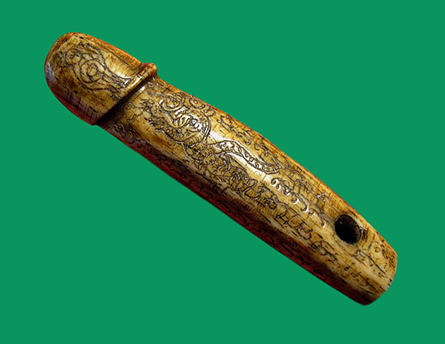|
Perhaps the most misunderstood major religious symbol is the Shiva-lingam. It is prominent in Thai Buddhist architecture, which is the reason I am devoting this essay to it. It is also a very fine example of how the realms of discourse about faith overlap here in Thailand.
First, what is the Shiva-lingam? In Hindu symbolism the lingam usually looks like a short post that is either round or octagonal, but sometimes square with a round top. It refers to the energy and potential of God. It alludes to power and creativity. But it is indivisible from the female counterpart represented as the Yoni. They are similar, then, to the Yin and Yang of Northern Asian religions. Recent Hindu theologians have objected to the very idea that the Shiva-lingam is a phallic symbol. They insist that the idea was developed at a time when Buddhism was predominant, and it was reinforced by the British who despised all things Hindu, and especially the Shiva-lingam. In Thailand nine Shiva-linga are used as boundary markers around a bot (ordination chapel) in a Buddhist temple. The ninth stone is actually buried in the very center of the chapel as its foundation stone. City pillars are also in the form of Shiva-lingam. Scholars indicate that the city pillars of North Thailand were a tradition inherited from Tai cultural roots that pre-date Khmer influence which was Hindu. So, there seems to be a separate strain of faith. What is it? Clearly, it is a fertility symbol. To this day there are examples of phallic symbols scattered throughout Thai folklore and practice. For the most part there is no use denying that the symbol is a penis, sometimes grotesque and sometimes very realistic. It would be convenient to sanitize these as crude forms of Shiva-linga, but I cannot accept that interpretation. The symbol, called in Thai palad khik, is a power-attracting charm or talisman. The folklore regarding palad khik carries all the marks of supernaturalism with a heritage that goes back to early animism (the pantheistic belief that all things in nature had spirits worthy of reverence). The main characteristic of modern supernaturalism is its ambiguity. So also with palad khik. They are sometimes used as fertility symbols, sometimes as protective symbols (especially against drowning), or to restore energy to resist the spiritual aspects of disease and misfortune. A man may wear a little carved penis image on a cord around his waist, keeping it away from his real thing, to deceive demons and add to a man’s strength and resistance. Parents might put one around a baby’s waist to persuade the demon that the vulnerable child is really a full-fledged adult. A woman might purchase a palad khik and offer it at a shrine where these are collected, to encourage a wanted pregnancy. Philip Cornwel-Smith has an excellent article on this in Very Thai: Everyday Popular Culture with excellent pictures by John Goss [Bangkok: River Books, 2005]. If Siva-linga and Thai palad khik have anything in common it is a shared reference to creative energy and perhaps a heritage from religious culture that predates Vedic Hinduism. But the symbols should not be confused. The most potent palad khik are invested with power through chants that few know how to do these days. Mistreating a palad khik, or misrepresenting one by subjecting it to ridicule, can easily create hard feelings and strong reactions. But mis-handling or scorning a Shiva-linga can be considered in the same light as demeaning a Buddha image or a Christian crucifix; it would be a crime under Thai law. Finally, I admit that not all people in Thailand agree with this distinction I have made. Most Thai people accept the Buddhist notion that Shiva-linga are phallic symbols as are palad khik. A controversy in Krabi Province reported on Oct 24, 2014 by Thai InfoNet conflates Shiva symbols with phallic symbols. Most Thai Christians have inherited the missionary bias that all these sexual referents are demeaning and wrong while refusing to recognize the same idea in tall church steeples. Most young men want nothing to do with the mockery that would come from being found to have a penis image tied around their waists or tattooed on their bodies. Most modern Thai people think of the whole subject as at least a little dirty. One has to be a bit desperate to have anything to do with this questionable aspect of spiritualism. Cornwel-Smith thinks the veneration of palad khik will pass away in a few years. I have doubts about that. This symbol in one form or another is one of the oldest and most enduring.
0 Comments
Leave a Reply. |
AuthorRev. Dr. Kenneth Dobson posts his weekly reflections on this blog. Archives
March 2024
Categories |
| Ken Dobson's Queer Ruminations from Thailand |
|

 RSS Feed
RSS Feed
